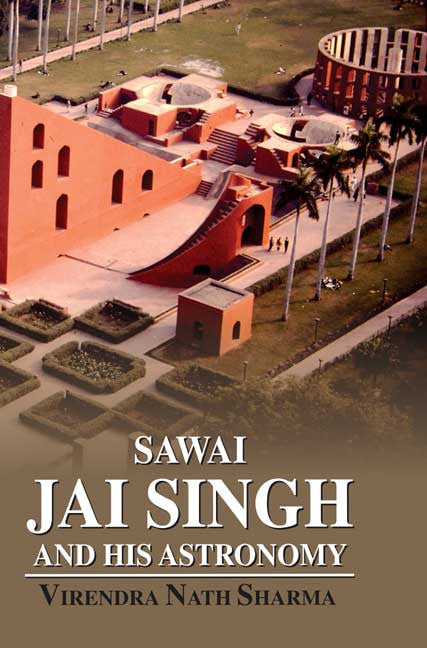Sawai Jai Singh and His Astronomy
Sawai Jai Singh and His Astronomy - Paperback is backordered and will ship as soon as it is back in stock.
Couldn't load pickup availability
Sawai Jai Singh, the statesman astronomer of 18th century India, made a great deal of effort to rejuvenate astronomy in India. Towards his ambitious goal, he designed astro-nomical instruments, built observato-ries, prepared a Zij or a text for astronomical calculations, and sent a fact-finding scientific mission to Europe. His high precision instruments were designed to measure time and angles to the very limit of naked eye observations. At his observatories, Hindu pundits, Muslim nujuumis, and European Jesuits worked side by side. Jai Singh spent enormous sums of money on his scientific pursuits and yet he failed to revive astronomy in India. Sawai Jai Singh and His Astronomy critically examines different facets of Sawai Jai Singhês astronomical program and attempts to answer questions, such as, why he opted for naked eye masonry instruments when telescope had become common with European astronomers, and why he failed to rejuvenate the science of astronomy in the country.
Review(s)
–... The book is the result of a serious research on Jai Singh and is undoubtedly the best book presently available on the subject. Every piece of evidence has been carefully and critically examined.... Sharma must be thanked for such a work when it was badly needed...†- Journal of History of Science
–...Sawai Jai Singh is a well-researched, well-written and well-illustrated volume which should be of interest to scholars of history of science. It brings out the essence of the life and work of a ruler who wanted to be modern in an age of intolerance and bigotry.†- Science Reporter
–...Professor Sharmaês lucid and comfortably informative description of these [Jai Singhês] instrumentês virtues and limitations, and how they came to be built, is a pleasure to read... . This is a book that can be enjoyed more than once...†- The India Magazine
–Dr. Sharmaês book is a fine example of this (an unbiased) kind of work, with its very lucid, scholarly, and detailed investigation into the origins and activities of remarkable astronomical observatories erected in India by a Rajput chieftain...†- Choice, Science and Technology
–Dr. Sharmaês book explores in considerable depth the questions of what the famous eighteenth-century ruler of Jaipur attempted to accomplish..., and its chief contribution to the subject, consists of detailed description and evaluations..., discussions of flaws and practical difficulties encountered in using the instruments...†- Archives Internationales DêHistorire Des Science
–...I had occasion to revisit the Maharajahês observatory in Delhi and Jaipur, and found Sharmaês book an invaluable guide... - Journal for the History of Astronomy
About the Author(s)
-
Pages
-
Edition
-
Size
-
Condition
-
Language
-
Weight (kg)
-
Publication Year
-
Country of Origin
-
Territorial Rights
-
Reading Age
-
HSN Code
-
Publisher




